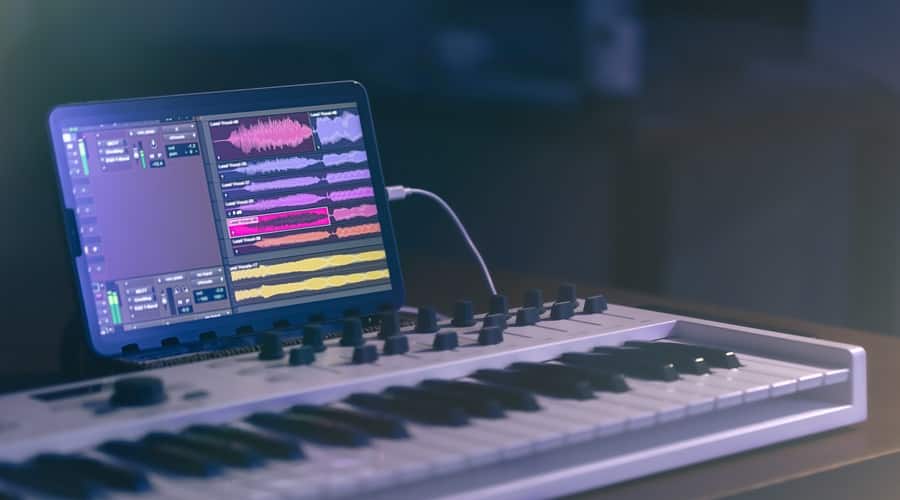
Unleash Your Musical Creativity with Music-Making Software
In the ever-evolving world of music, technology has revolutionized how artists create, document, and produce their compositions. Tune-making software has become necessary for musicians, producers, and composers, supplying many features and competencies as soon as they are available in expert recording studios. Those cutting-edge software packages have enabled humans, from novices to pro professionals, to unharness their musical abilities and recognize their innovative pursuits.
What is Music-Making Software?
Music-making software (digital audio workstations (DAWs) or music production software) refers to computer applications designed specifically for creating, editing, recording, and producing music. These powerful tools allow musicians to compose, arrange, mix, and master their musical projects entirely within a digital environment, eliminating the need for expensive hardware and physical recording studios.
Key Features of Music-Making Software
Music-making software typically includes a comprehensive set of features to support the entire music production process, including:
Multi-track Recording and Editing:
It enables users to record and edit multiple audio and MIDI tracks simultaneously, allowing for the layering of different elements to create complex compositions.
Virtual Instruments and Sound Libraries:
Provides access to an extensive collection of virtual instruments, synthesizers, and sound samples, empowering users to explore diverse sonic palettes and experiment with various musical styles.
Audio Editing and Processing:
It offers a suite of tools for editing, manipulating, and processing audio tracks, including features such as cut, copy, paste, fade, time-stretching, pitch-shifting, and more.
MIDI Sequencing and Notation:
Facilitates MIDI data creation, editing, and playback, allowing users to compose melodies, harmonies, and rhythms using MIDI instruments. Additionally, some software may include features for viewing and editing musical notation.
Mixing and Mastering:
Consists of an extensive collection of mixing and mastering equipment, including delay units, equalizers, compressors, mixing consoles, reverbs, and other sound effects. With the use of these tools, users can produce mixes and masters for their music projects that are of a high caliber.
Automation and Effects:
Allows for the automation of parameters and the application of various audio effects to tracks, enabling users to add movement, depth, and texture to their compositions through dynamic changes and creative effects processing.
Performance and Live Recording:
Supports live performance and recording through features such as loop recording, real-time effects processing, MIDI mapping, and performance-oriented interfaces, catering to musicians who prefer to capture their performances in a live setting.
Collaboration and Sharing:
Facilitates collaboration and sharing by providing tools for project sharing, file exchange, cloud storage integration, and version control, enabling users to collaborate with other musicians, producers, and collaborators remotely.
Types of Music-Making Software
Digital Audio Workstations (DAWs):
All-inclusive software programs are the core of the music production process. They include a wide range of instruments for recording, editing, mixing, and mastering MIDI and audio files. Pro Tools, Logic Pro, Ableton Live, FL Studio, and Reaper are well-known examples.
Sequencers and MIDI Editors:
Applications specifically designed for creating, editing, and arranging MIDI data. These tools are essential for composing melodies, harmonies, and rhythms using virtual instruments and MIDI controllers. Examples include Cubase, Reason, and Bitwig Studio.
Audio Editors:
Software dedicated to editing and manipulating audio files at a granular level. Audio editors are commonly used for tasks such as trimming, cutting, fading, and applying effects to audio recordings. Notable examples include Adobe Audition, Audacity, and Sound Forge.
Notation Software:
Programs designed for creating, editing, and printing musical scores and sheet music. Notation software is invaluable for composers, arrangers, and educators who need to write music in traditional notation format. Popular options include Sibelius, Finale, and MuseScore.
Loop and Sample Managers:
Tools for arranging, navigating, and working with sound libraries, samples, and loops in audio. Musicians and producers can easily access a wide variety of pre-recorded sounds and incorporate them into their works with the help of these software tools. Spectrasonics Omnisphere, Loopcloud, and Native Instruments Kontakt are a few examples.
Popular Music-Making Software Tools
While the market is saturated with various music-making software options, some of the most popular and widely used tools include:
Ableton Live:
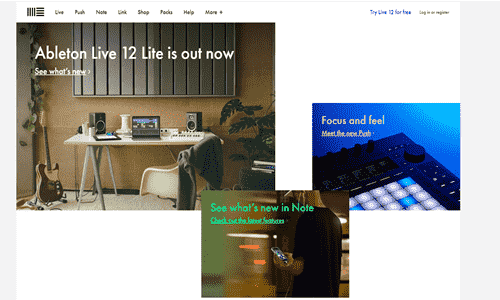
Description:
Ableton Stay is a function-rich virtual audio workstation (DAW) for DJing, stay performance, and music introduction. This is famous for its user-friendly interface.
Pros:
Flexible session view for improvisation, comprehensive MIDI and audio manipulation tools, seamless integration with hardware controllers, and a vast library of built-in instruments and effects.
Cons:
Higher price points for full versions are the steep learning curve for beginners.
Used For:
Electronic music production, live performance, remixing.
Pricing Package:
There are various options, including Live Intro, Live Standard, and Live Suite, with prices ranging from $99 to $749.
Logic Pro:
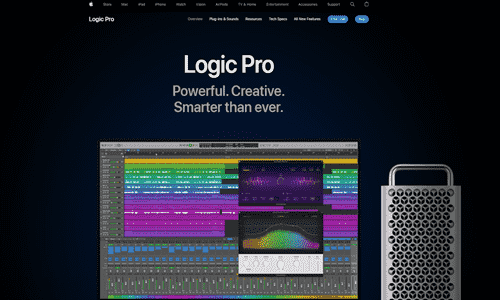
Description:
Apple created Logic Pro, a feature-rich digital audio workstation (DAW) for macOS users, which includes many recording, editing, mixing, and music production tools.
Pros:
The intuitive user interface, extensive virtual instruments and effects library, seamless integration with Apple hardware and software ecosystem, and powerful MIDI editing capabilities.
Cons:
Limited compatibility (macOS only), relatively higher price for full version.
Used For:
Music composition, production, mixing, and mastering.
Pricing Package:
$199.99 is the price for a one-time purchase of this product on the Mac App Store.
FL Studio:
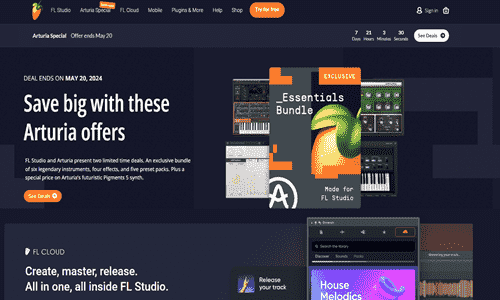
Description:
The popular DAW FL Studio (previously FruityLoops) is renowned for its numerous capabilities for electronic music composition, beat creation, and remixing, as well as its easy-to-use interface.
Pros:
Intuitive workflow with pattern-based sequencing, a wide range of virtual instruments and effects, lifetime free updates, and affordable pricing options.
Cons:
Windows-only software, limited native support for third-party plugins.
Used For:
Electronic music production beat making, hip-hop production.
Pricing Package:
There are various editions available, including the Fruity Edition, Producer Edition, and Signature Bundle, with prices ranging from $99 to $299.
Reason:
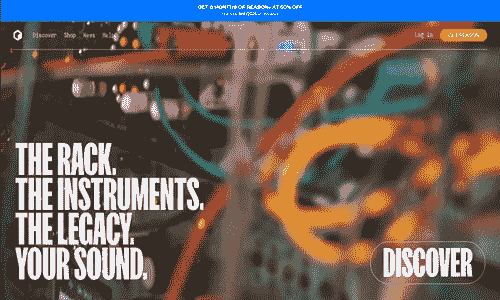
Description:
Reason is a digital audio workstation and virtual studio environment that offers a unique modular workflow. It allows users to create music by connecting virtual instruments and effects in a virtual rack.
Pros:
A modular approach to music production, extensive library of virtual instruments and effects, intuitive routing and signal flow, robust mixing and mastering tools.
Cons:
Limited third-party plugins support a higher price for the full version.
Used For:
Music production, sound design, electronic music composition.
Pricing Package:
Reason is available as Reason Intro, Reason, and Reason Suite, priced at $99, $399, and $599, respectively.
Cubase:
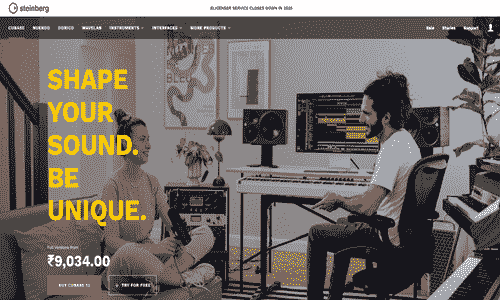
Description:
Cubase is a professional DAW developed by Steinberg. It offers advanced tools for music composition, recording, editing, and mixing.
Pros:
Comprehensive feature set for music production and audio post-production, extensive MIDI editing capabilities, flexible audio recording and editing tools.
Cons:
High cost for full version, steep learning curve for beginners.
Used For:
Music production, audio recording and editing, film scoring.
Pricing Package:
Cubase Elements, Cubase Artist, and Cubase Pro are available in several editions, with prices ranging from $99.99 to $579.99.
Studio One:
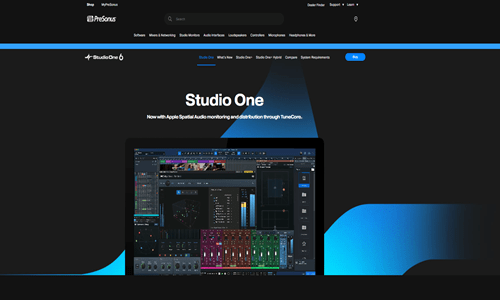
Description:
Studio One is a user-friendly DAW developed by PreSonus. It offers a streamlined workflow and powerful features for music production, recording, and mixing.
Pros:
An intuitive drag-and-drop interface, extensive virtual instruments and effects, advanced audio and MIDI editing tools, and seamless integration with PreSonus hardware.
Cons:
Limited third-party plugin ecosystem compared to other DAWs.
Used For:
Music composition, production, recording, and mixing.
Pricing Package:
Available in multiple editions, including Studio One Prime (free), Studio One Artist, and Studio One Professional, with prices ranging from $99.95 to $399.95.
Bitwig Studio:
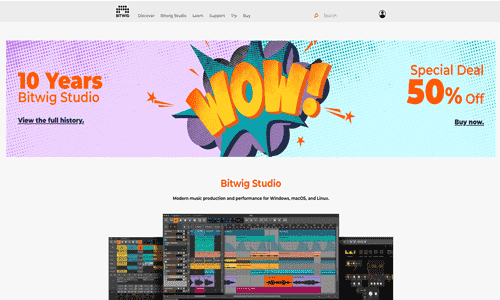
Description:
Bitwig Studio is a next-generation DAW with a hybrid modular workflow combining traditional linear recording with non-linear clip launching and performance features.
Pros:
Flexible modular environment, extensive modulation capabilities, integrated support for MPE (MIDI Polyphonic Expression), and intuitive user interface.
Cons:
Limited plugin ecosystem compared to other DAWs, occasional stability issues.
Used For:
Electronic music production, live performance, experimental music.
Pricing Package:
Bitwig Studio is available in various editions, including Bitwig Studio, Bitwig Studio EDU, and Bitwig Studio 16-Track, with prices ranging from €299 to €399.
GarageBand:
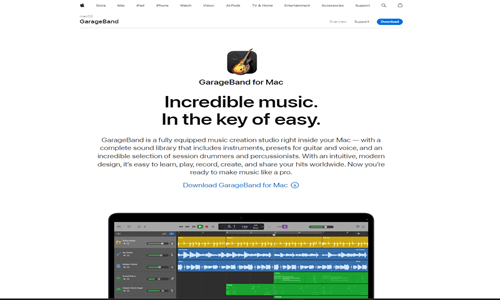
Description:
GarageBand is a beginner-friendly DAW developed by Apple. It offers a wide range of virtual instruments, loops, and effects for music creation and recording.
Pros:
Free for macOS and iOS users, intuitive interface with built-in tutorials, extensive library of loops and virtual instruments, and seamless integration with other Apple devices and software.
Cons:
Limited advanced features compared to professional DAWs, macOS, and iOS exclusivity.
Used For:
Music composition, recording, and editing for beginners and hobbyists.
Pricing Package:
Free for macOS and iOS users.
LMMS (Linux MultiMedia Studio):
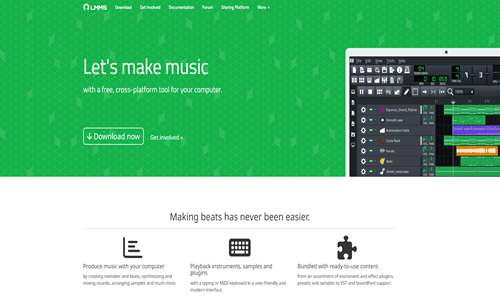
Description:
LMMS is a free and open-supply virtual audio workstation for Linux, Home Windows, and macOS that offers many skills for beat-making, track production, and composition.
Pros:
Free and open-source software, a comprehensive set of built-in instruments and effects, a user-friendly interface, and support for VST plugins.
Cons:
Limited compatibility with third-party plugins, occasional stability issues.
Used For:
Music production, beat making, and electronic music composition on Linux, Windows, and macOS platforms.
Pricing Package:
Free and open-source.
How to Choose the Right Music-Making Software
Selecting the right music-making software can be a daunting task, as each tool offers its own unique set of features and workflows. When choosing a software solution, consider the following factors:
Musical Genre and Style:
Different music genres and styles may require specific features or workflows. For example, electronic music producers may prioritize software with robust synthesizer capabilities, while composers may look for software with advanced scoring and notation tools.
Skill Level and Experience:
Consider your level of expertise in music production. Beginner-friendly software often provides simplified interfaces and guided workflows to help newcomers get started quickly. On the other hand, professionals may require more advanced tools and features to meet their specific production needs.
Hardware and Operating System Compatibility:
Ensure the music-making software is compatible with your computer’s hardware specifications and operating system. Some software may be optimized for specific platforms like Windows, macOS, or Linux, while others offer cross-platform compatibility.
Budget:
Examine the cost of various software solutions for creating the track. While certain software may require a one-time or month-to-month fee, others can offer loose variations or trial durations. Remember to account for extra expenses for sound libraries, digital gadgets, or plugins.
Workflow and Preferences:
Consider your preferred workflow and the tasks you’ll perform with the software. For example, if you plan to record live instruments or vocals, look for software with robust audio recording and editing capabilities. If you prefer a modular approach to music production, consider software that supports third-party plugins and integrates seamlessly with external hardware.
Tips for Using Music-Making Software Effectively
To maximize the potential of music-making software and enhance your creativity, consider the following tips:
Invest in Quality Audio Hardware:
Pair your music-making software with high-quality audio interfaces, microphones, and studio monitors to ensure optimal sound quality and clarity in your recordings and productions.
Master Keyboard Shortcuts:
Acquire knowledge of and commit to memory keyboard shortcuts unique to your music production program. These keyboard shortcuts can greatly accelerate your workflow, making it easier to use the program and complete tasks more quickly.
Utilize Templates and Presets:
Use the presets and built-in templates that come with your music production software. Using these templates as a jumping-off point for your work saves time and effort when configuring your instrumentation and tracks.
Experiment with Virtual Instruments and Effects:
Examine the various virtual instruments, synthesizers, and audio effects accessible in your music-making software. Try out various effects chains, textures, and sounds to give your compositions more depth and originality.
Stay Up-to-Date with Software Updates:
Ensure your tune-making software program is up to date by checking for updates regularly. Updates often comprise bug repairs, performance upgrades, and new functions to ensure you have access to the newest features and improvements.
Collaborate with Others:
Utilize the collaboration tools provided by your music production software to collaborate virtually with other musicians, producers, and artists. To improve your creative process, communicate ideas and criticism, work together in real time, and share project files.
Comparison of Paid vs. Free Music Making Software
While many premium music-making software options come with a price tag, several free and open-source alternatives are also available. Here’s a comparison of paid and free music-making software:
Paid Software:
- Generally offers a comprehensive suite of advanced features and capabilities, catering to the needs of professional musicians and producers.
- Provides regular updates and dedicated support from the developers, ensuring ongoing improvements and assistance.
- It grants access to a wide array of premium virtual instruments, effects, and sound libraries, expanding creative possibilities.
- Offers better stability and performance with optimized code and professional-grade engineering.
Free Software:
- It provides a cost-effective solution that is particularly beneficial for beginners or those with budget constraints.
- They may have limited features or fewer advanced tools than their paid counterparts, although some free options offer impressive functionality.
- Updates and support may be less frequent or reliant on community contributions, potentially leading to slower development cycles.
- It serves as a great starting point for learning track manufacturing fundamentals, allowing users to test and hone their skills without monetary commitment.
Advanced Techniques in Music Production with Software
As you gain experience with music-making software, you may want to explore more advanced techniques and workflows, such as:
Automation and Modulation:
Experiment with automating parameters such as volume, panning, and effects over time. Modulating effects like filters, delays, and reverbs can add dynamic movement and texture to your tracks.
Sound Design and Synthesis:
Dive deeper into synthesizers and sound design tools to sculpt unique and custom sounds. Explore synthesis techniques such as subtractive, additive, FM, and wavetable synthesis to craft sounds that stand out in your productions.
Mastering and Post-Production:
Learn about advanced mastering techniques to fine-tune and polish your music for distribution. This includes dynamic processing, EQ shaping, stereo imaging, and final limiting to achieve a professional and cohesive sound.
Remixing and Sampling:
Experiment with incorporating samples, loops, and remixing techniques into your compositions. Use sampling creatively to manipulate and transform existing audio material, breathing new life into familiar sounds and melodies.
Live Performance and Improvisation:
Explore the live performance capabilities of music-making software for improvisation and real-time manipulation. Set up MIDI controllers, keyboards, or launchpads to trigger loops, samples, and effects, allowing for spontaneous creativity and experimentation during live performances.
Collaborative Features in Music-Making Software
Cloud Collaboration:
Multiple customers can be admitted to and edit the identical venture concurrently through cloud-primarily based sharing. This fosters actual-time collaboration and ensures that each collaborator is running at the state-of-the-art version of the challenge.
Version Control and Revision History:
Tracks changes made to the project and maintains a revision history, allowing collaborators to review and revert to previous versions if needed. This feature promotes transparency, prevents data loss, and facilitates collaboration across project iterations.
Chat and Communication Tools:
Integrates chat and communication tools directly within the software interface, enabling collaborators to communicate in real time. This facilitates discussions, feedback exchange, and decision-making, enhancing collaboration efficiency and cohesion.
Project Sharing and File Transfer:
It simplifies the process of sharing projects and transferring files between collaborators. Whether sharing project files, audio recordings, or sample libraries, seamless file transfer capabilities streamline collaboration and ensure that all necessary assets are readily available to team members.
Integrations with Hardware and External Software
Music-making software often integrates with various hardware and external software, expanding its capabilities and allowing seamless workflow integration. Examples of such integrations include:
Audio Interfaces and MIDI Controllers:
Integration with external audio interfaces and MIDI controllers enables recording, playback, and control directly within the music-making software. This allows musicians to capture performances and manipulate virtual instruments with tactile control.
Virtual Instrument Plugins:
Music-making software often supports third-party virtual instrument plugins, expanding its sonic palette with various sounds and textures. These plugins offer a diverse range of instrument emulations, synthesizers, and sample libraries to inspire creativity in music production.
Audio Effect Plugins:
Integration with third-party audio effect plugins enhances the software’s processing capabilities, allowing users to apply various effects and treatments to their audio tracks. These plugins offer endless possibilities for sound shaping and manipulation, from EQs and compressors to reverbs and delays.
Video Editing Software:
Music-making software may integrate with video editing software, enabling users to synchronize music with visual content for music videos or multimedia presentations. This integration streamlines the process of creating synchronized audio-visual experiences, enhancing the impact of music compositions.
Cloud Storage and Collaboration Platforms:
Integration with cloud storage and collaboration platforms allows seamless assignment sharing and backup. By connecting to cloud garage services, users can access their initiatives from anywhere, collaborate with crew individuals in actual time, and make certain statistics protected and redundant.
The Future of Music-Making Software
The music-making software industry is continuously evolving, with new technologies and advancements shaping the future of music production. Some exciting developments to watch out for include:
Artificial Intelligence and Machine Learning:
The integration of AI and ML technologies into music-making software holds the potential to revolutionize various aspects of the creative process. From automated composition and arrangement to intelligent sound generation and adaptive music creation tools, AI-driven features could augment the capabilities of musicians and producers, sparking new waves of innovation and experimentation.
Immersive Audio and Virtual Reality:
The emergence of immersive audio formats and virtual reality environments presents intriguing music creation and performance opportunities. Music-making software may evolve to support immersive soundscapes and interactive VR experiences, enabling artists to craft immersive narratives and transport listeners into captivating sonic worlds.
Cloud-Based Collaboration and Subscription Models:
Cloud-based collaboration platforms and subscription-based pricing models are poised to become increasingly prevalent in the music-making software ecosystem. These innovations offer greater accessibility, flexibility, and scalability, empowering musicians to collaborate seamlessly across geographical boundaries and access cutting-edge tools and updates through subscription-based services.
Hardware Integration and Internet of Things (IoT):
Deeper integration with hardware devices and IoT technologies will enrich the music production experience and unlock new creative possibilities. From smart controllers and MIDI instruments to interconnected audio devices and IoT-enabled environments, seamless integration with music-making software could revolutionize workflow efficiency and expand the scope of musical expression.
Blockchain and Decentralized Platforms:
Blockchain technology and decentralized platforms promise to transform music distribution, royalty management, and artist empowerment. By leveraging blockchain-based solutions, music-making software may facilitate transparent royalty payments, streamline licensing processes, and empower artists to retain greater control over their creative works in a decentralized ecosystem.
FAQs
Is music-making software only for professional musicians?
Music-making software caters to many users, from amateur enthusiasts to professional musicians. It offers various tools and features suitable for different skill levels and musical aspirations.
Can music making software be used on both Windows and Mac computers?
Many music-making software programs are compatible with Windows and Mac operating systems. However, it’s essential to check the system requirements of each software before purchasing it to ensure compatibility with your device.
What types of music can I create with music making software?
Track-making software allows you to create a diverse variety of tune genres, including digital, hip-hop, rock, pop, classical, and more. The software’s flexibility and versatility allow users to discover extraordinary patterns and test with numerous sounds and devices.
Do I need musical knowledge to use music making software?
While some musical information may be beneficial, it’s not always required to use song-making software. Many programs offer intuitive interfaces, pre-made loops, and virtual units that permit customers to create tunes without enormous musical schooling. Moreover, tutorials and guides are often available to help customers study the fundamentals of song manufacturing.
Can I record live instruments using music-making software?
Yes, most music-making software includes features for recording live instruments, vocals, and external audio sources. Users can connect microphones, guitars, keyboards, or other instruments to their computer’s audio interface and record directly into the software’s interface.
Is music-making software suitable for professional studio productions?
Absolutely. Many professional studios use music-making software as part of their production workflow. Advanced features, high-quality sound libraries, and extensive mixing and mastering capabilities make modern music-making software powerful for professional music production.
Conclusion
In conclusion, tune-making software programs offer a wonderful array of equipment and possibilities for musicians, producers, and fanatics alike. From feature-rich digital audio workstations to specialized sequencers and innovative loop managers, there’s an approach to fit every need and budget. Whether or not you’re composing symphonies, crafting beats, or experimenting with sound diagrams, these software program tools empower creativity and facilitate the realization of musical visions. With continuous improvements and innovations in a generation, the destiny of song-making software programs will surely carry even greater thrilling opportunities for artists to reveal themselves and push the bounds of tune introduction.




